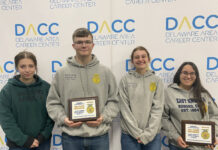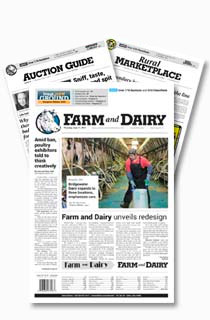As spring begins, we may be ready to turn our herds out to graze, but there are things to consider before making the move.
It’s still dry. Across most of the southern and eastern part of the state, soil moisture is still at a premium. Winter brought some much needed recharging of ponds and streams; however, with the ground being frozen, a large portion of the precipitation ran off into surface water sources.
With limited soil moisture, the greatest concern currently is how to manage what little regrowth that is greening up across the region. Nearly 30% of Ohio is abnormally dry as I write this, according to the U.S. Drought Monitor.
Balancing act
What happens if we turn out to pasture without additional soil moisture? How long will hay supplies last? What other feed options make sense in my operation?
All of the above are good questions that have been asked in recent weeks. Coming out of Ohio Beef Expo, it is certainly a great time to be in the cattle business if there is forage available for this current production year.
While there is some green grass out there, overgrazing this spring will set forage growth back for the entire summer, especially if current weather patterns hold. Delaying turn out and allowing vegetative growth to happen this spring combined with good rotational grazing management will be key in 2025.
This will hold especially true for pastures that were overgrazed and beat up last fall during the drought. Overgrazing late into the year harms the plant by not allowing it to store energy into the roots so that it can regrow the following spring.
I realize that may be hard for some as stored forages are low in supply. Ohio had 30% less grass hay made in 2024 than in previous years and carryover looks to be in short supply as well.
Building resiliency
Considering the past nine months of dry weather, I would encourage producers to take a look at alternatives to the norm. Perhaps grazing spring annuals or planting some sorghum-sudangrass to harvest as baleage in order to provide additional forage options makes sense in 2025. Being innovative in how we manage stored forages going forward will be key.
In those counties that received drought-related assistance from their local Farm Service Agency and soil and water conservation district in addition to covering the cost of supplemental feed, there is an opportunity to invest those remaining dollars into improving forage stands, purchasing tools to improve grazing management and to create additional water availability in pastures.













